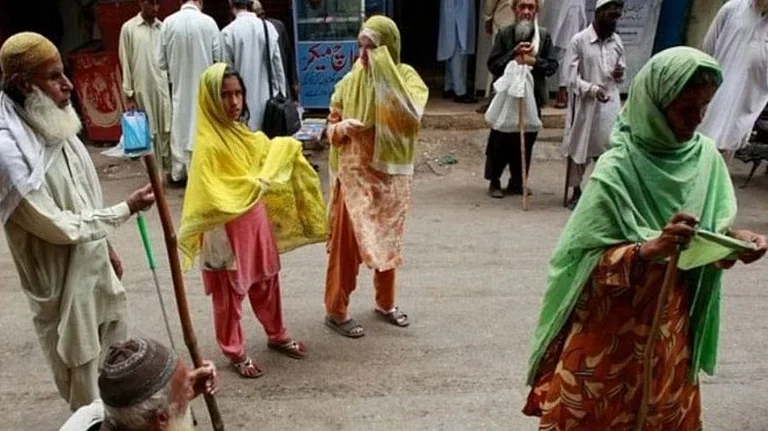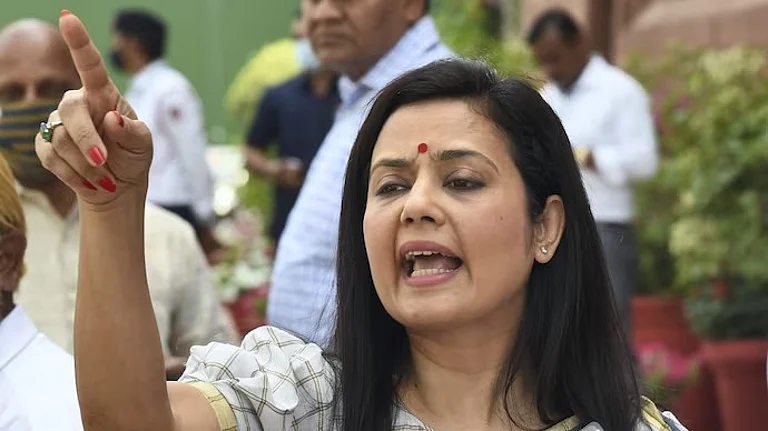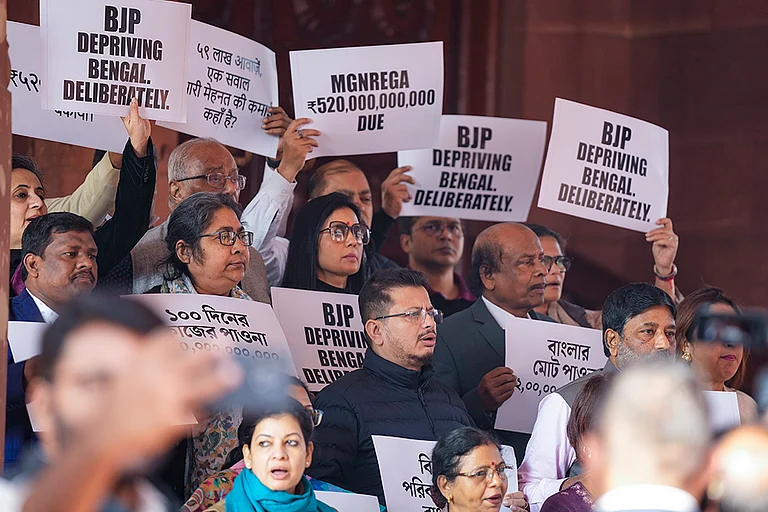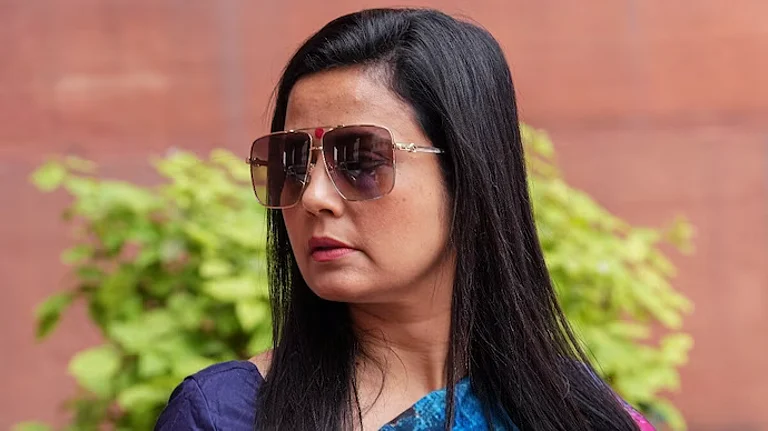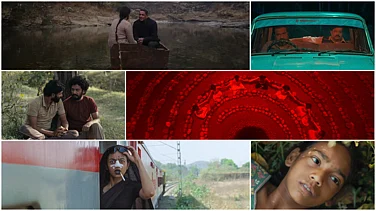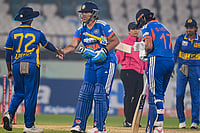On August 12, lyricist-singer Swanand Kirkire woke up around six am and began scrolling through Instagram. He saw Zebunnisa Bangash’s (popularly known as ‘Zeb’) post with many pictures of Haniya Aslam – the other half of Zeb/Haniya – the duo that caused tremors in Pakistan’s (and India’s) YouTube in the late 2000s. Kirkire didn’t pay much attention to what the caption said, but he opened a text message on a WhatsApp group comprising him, Zeb, Haniya and Shantanu Moitra. That’s how Kirkire learned about Aslam’s passing due to a cardiac arrest; she was 46. Listening to him talk, it’s evident that things are still a bit raw, the news hasn’t sunk in. “It’s a very emotional thing for me, to talk about Haniya,” Kirkire says, “I can’t speak specifically to your questions here because I remember her as a whole, uncondensed person.”
Given that Bangash was the primary vocalist in the act, the spotlight always shone brightly on her. But it was Aslam’s overall music and songwriting sense that distinguished them from their contemporaries. Cousins in real life, Bangash and Aslam were always in the proximity of music, growing up listening to the likes of Mehdi Hasan and Abida Parveen in drawing room mehfils (because of the 65% tax levied on live concerts by the Zia Ul-Haq regime in the 70s and 80s). Going to college in the United States, they found themselves in a basement during a winter break, composing their first song. The song turned out to be Chup! – the title track for their landmark 2008 album. Those were still early days of the Internet, and Aslam, utilising her computer science degree, made a website for them, uploading their compositions on it. The songs travelled from South Asian households in the United States to university campuses, Pakistani radio, and, eventually, Coke Studio.
Which is where their popularity exploded. Paying homage to their Pashtun roots, the duo sang the Afghan folk song Bibi Sanam Janem in the third season in 2010 – which was among the earliest ‘viral’ videos from the initial seasons. But it was in a performance for the second season, Paimona Bitte, where Moitra and Kirkire heard them for the first time. “It was the singing that caught my attention first,” recounts Moitra, “but I also noticed a girl wearing round glasses, sitting in the background, playing the guitar. The video didn’t say who was who, and it appeared that the singer was the captain of the ship. But I instinctively knew this girl sitting in the back was at the heart of the music I was listening to.”
Moitra, Kirkire, Bangash and Aslam met on The Dewarists in 2011 – a TV show that brought two distinct sets of musicians together to compose an original song. The producers (OML) flew the Pakistani duo down to Mumbai a week before the shoot, and the four artists simply spent time together. In Moitra’s words, – “we ate, moved around the city and chilled.” Bangash and Aslam were fans of Bawra Mann – a song that was hugely popular in Pakistan. Moitra noted how Paimona Bitte and Bawra Mann were both seven-matra (beat) songs, and therefore their collaboration should also adhere to the same beat pattern. And that’s how Kya Khayaal Hai was born. Starting with a few lines from a Dari poem (immortalised by Mehdi Hasan through a ghazal in the 1970s), the song is a simple, sweet, clean pre-conversation (written by Kirkire and Aslam) between two nations, asking each other’s thoughts on coexisting happily and peacefully. It’s something that is obviously from another era, when such initiatives even seemed possible.
The four musicians promised each other that this first song would spark a full-fledged album. Exactly a year after Kya Khayaal Hai, they decided to start work on it, for which Bangash and Aslam visited Mumbai again for a full month. They went to Moitra’s farmhouse in Pune, where he witnessed Haniya Aslam in all her glory. “She was constantly either reading, creating. Very tech-friendly. She was always curious about the new kinds of sound that could be synthesised using technology.” Aslam taught Moitra and Kirkire what ‘hotspot’ was, in 2013.
Not just quiet and shy, Moitra remembers Aslam as someone allergic to the spotlight. “Usually, people who break norms are very front-and-centre. What was rare in Haniya’s case was that she would go unnoticed in most rooms, until she started speaking up in her own quiet way, which would invariably challenge the status-quo.” Chup! (2008) illustrates everything Moitra says. The entire album unfolds from the point-of-view of a strong, assertive, and vulnerable female voice. It’s a great subversion of the pop space that has been populated by songs written from the mopey, male perspective.
All songs (except one) are written and composed by Aslam, and the longer you listen to it the more you can feel her musical imprint on them. The way it effortlessly switches genres between Hindustani classical, folk, R&B and 60s rock and roll, sometimes within the space of the same song. “She was edgy, her writing was risqué,” says Moitra. “Haniya was a master of integrating influences from around the world. She played this riff behind the chorus of Kya Khayaal Hai, which was so unusual and distinct. She would push the production in another zone.”
The album by Moitra, Kirkire, Bangash and Aslam didn’t materialise, even though they did produce about six-seven songs for it. “The album eventually didn’t release because of the geopolitical tension between the two nations,” says Moitra, ''It’s not just about the release of an album, but that precise moment when a song is created. That lives on…”
Over the years, the group didn’t lose touch. Kirkire mentions he was texting with Aslam only the week before she passed. On his Instagram, he’s shared the last few messages he exchanged with her, where Aslam is being her lyrical self – describing her hopes for how life goes on – ‘timtimati rahe, bhinbhinati rahe” (it continues to glimmer, it keeps buzzing). Moitra says their Whatsapp group is now silent, where Aslam once sent pieces to her ‘sarhad paar’ collaborators. “She knew about my passion for climbing. (She was) very well-read (and) very well-informed,” recounts Moitra. “We would talk to each other often, as friends, not musicians. She would always ask about how a composer thinks.” Always at the receiving end of questions from Aslam, it is slowly dawning on Moitra that there will be no questions from her anymore.
Aslam had moved to Canada in recent years, establishing her own studio, while learning music production and sound engineering. Moitra believes there was so much music inside the 46-year-old that she struggled to express it. “Like they say in Bangla du haathe aashirbaad kora hoyechhe oke (she was truly blessed).” Putting her work out without wanting to deal with the fame was something that weighed heavily on Aslam. “She’d chosen a difficult path, where she wanted to share her gift with the world while remaining anonymous. It’s near impossible in today’s times. If you share your magic with the world, you will be put on a pedestal. And Haniya was uncomfortable with that. This dichotomy is what probably defined Haniya Aslam.”
Kirkire reveals how there was almost this unspoken pact between the acts, how neither of them would perform Kya Khayaal Hai in their respective live concerts. They would only perform it live when all four of them would be on a stage together. As a parting note, Moitra says how unlike popular norm, Aslam would never like a song to end on a ‘Sa’. She would be the happiest if a track sounded incomplete, almost like there’s a possibility for the song to go on. In a way, Aslam’s abrupt departure feels fitting. “I think Haniya’s story will go on, where people will discover her work without her having to deal with the fame,” reflects Moitra. “Just the way she wanted.”









